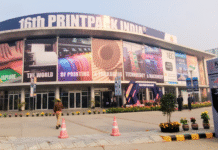Fujifilm, a global provider of print solutions, has announced the closure of the company’s offset plate production line in Tilburg, The Netherlands. The immediate triggers are rising raw material and energy costs, and a decrease in demand due to a shift towards digital.
Production of plates currently made in Tilburg will be transferred to factories in Japan and China. After this transfer has taken place, the production of offset plates in Tilburg will stop, with the process anticipated to be completed in late 2023.
The company says there has been a continuous decrease in the demand for offset printing plates caused by the transition to other forms of communication, particularly digital media, and the diversification of printed output as a result of the growth in digital printing.
This trend has been accelerated by the effect of the Covid pandemic and the impact this has had on the way people consume print. This situation has been further compounded in Europe by raw material cost increases, the volatility of the energy market, and the impact of higher inflation.
However, there is no doubt that offset printing will remain a critically important production process for many years to come, because of its ability to produce a high-quality, cost-effective print in highly productive and automated print businesses, the company said.
Fujifilm says it is committed to keep supplying its best-in-class offset printing plates into the EMEA (Europe, the Middle East, and Africa) market and be a key driving force by increasing the adoption of its process-less plates, such as the industry-leading Superia ZX, as they offer the best combination of quality and performance, and help print service providers improve production efficiencies.
The company says it will strive to serve EMEA customers in the best way under the new business setup and will continue to focus its efforts on ways it can contribute to the future of the offset printing market.















